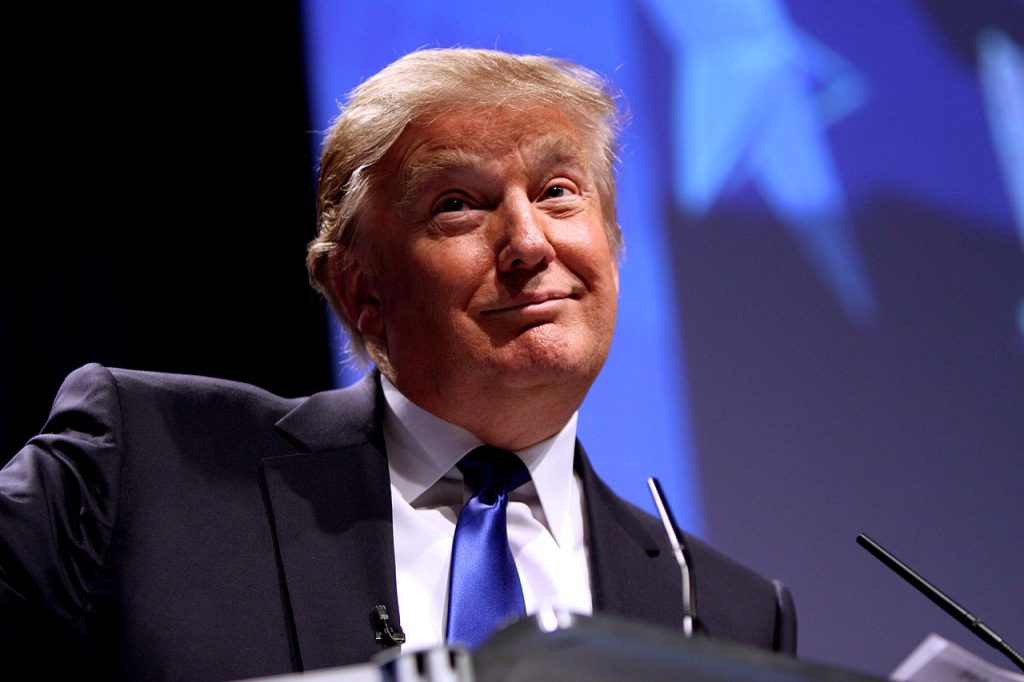Even the ones who are voting for him

Reporting on Donald Trump isn’t easy.
He’s an unrepentant liar with no ambitions beyond power and fame. He has no need to ever find gainful employment again and no conscience to bind him to reality.
While there is some evidence that fact checking is more effective than academics once believed, what Trump is doing goes beyond willful misrepresentation.
“We lack any common language for talking about press performance at the level where Trump eluded it,” Jay Rosen writes, in brief review of how modern conservatism has led us to this post-truth moment where there are no gatekeepers on the right who explain that Trump is lying about everything from crowd size to why a camera can’t move or what Obama said to a protestor.
He goes on to quote from Jason Stanley’s “Beyond Lying: Donald Trump’s Authoritarian Reality” to explain why the media can’t properly convey the depths of Trump’s mendacity:
Trump was not trying to make reference to reality in what he said to win votes. He was trying to substitute “his” reality for the one depicted in news reports.
“On a certain level, the media lacked the vocabulary to describe what was happening,” Stanley writes. And I agree with that. He compares what Trump did to totalitarian propaganda, which does not attempt to depict the world but rather substitutes for it a ruthlessly coherent counter-narrative that is untroubled by any contradiction between itself and people’s experience.
But the press really didn’t even really try, explains Brian Beutler:
On the rare occasion when Trump stories eclipsed the din of chatter about Clinton’s completely irrelevant emails, they were frequently about how Trump had shown “discipline” in the final stretch. In reality, on every single one of those days, he was saying outrageous and false things at a dizzying clip.
It’s part of a grander failure to understand how the right has exploited what Beutler calls “the bias toward balance,” which has been key part of the conservative effort to reshape reality that began in the early 1970s.
The creation a right wing media that’s the direct source of news for millions of Americans transcends its finite audience by intimidating the wider media into accepting that the conservative point of view, which is a complete fiction on issues like climate change, be represented in equal weight alongside actual reality.
This intimidation hit a fevered pace as Trump made Two Minutes Hate toward the media a key part of his traveling show, especially as he no long had polls to brag about, but it’s effectiveness at infusing a bias toward white grievances has largely been ignored, explains Ta-Nehisi Coates:
White racial grievance enjoys automatic credibility, and even when disproven, it is never disqualifying of its bearers. It is very difficult to imagine, for instance, a 9/11 truther, who happened to be black, becoming even a governor. And yet we live in an era in which the country’s leading birther might well be president.
The best example of how the media is biased toward the right wing narrative of victimhood is the flood of stories about the working class whites who became Trump supporters, parodied with proper viciousness by Benjamin Hart who visited “Bleaksville, Kentucky (or maybe it’s in Ohio or West Virginia, I can’t remember).”
Checking Trump against a rubric of reality is tough and exhausting. He’s earned some 240 Pinocchios from The Washington Post‘s Fact Checker, probably more than the number of electoral votes he’ll earn.
But the bias towards covering Trump’s appeal comes at a cost.
Where are the stories about the families Trump wants to break up with his deportation squads?
Where are the stories about the women and children Trump wants to bomb?
Where are the stories about the refugees Trump has demonized and wants to endless strand in hell?
Where are the stories about lives ruined by the stop and frisk policies Trump casually proposed taking national?
And by avoiding the real harm Trump could do to millions and millions of real people, the press has all but ignored the damage Trump would do to the people he’s promising to help — the white working class the media frets over endlessly.
Where are the stories about the millions of Americans with pre-existing who would lose health insurance?
Where are the stories about the families who could pay more in taxes as Trump offer the most of rich the biggest tax cut ever?
Where are the stories about the millions of Americans who could lose their jobs if Trump really did roll back Wall St. reform and let the economy experience another crash like 2008?
If we read those stories, we’d see that many of the people who’d be hurt worst by these policies would be the “white working class” he says he’d help.
It’s true Trump has an appeal beyond normal Republicans because he talks about a trade an issue that stokes the emotions of people who don’t attend Koch brothers’ weekend retreats. But has anyone asked a Trump supporter how he’d make trade deals better? Would they have any idea — given that Trump himself has never given us one example of a specific he would make better?
If only the sympathy for Trump’s victims had been extended for some realistic appraisal of his policies. We can’t expect the press to fix Trump’s lies.
But we can hope they will see beyond them.
[Photo by Gage Skidmore | Flickr]



